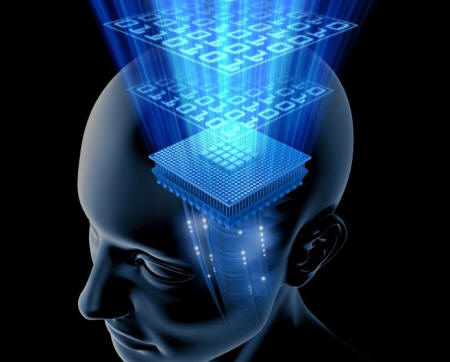|

by Nicholas West
August 8, 2013
from
ActivistPost Website

The goal to create a computer brain
every bit the equal to its human counterpart is nearing reality...
if the researchers involved can be believed. These are the same
researchers, after all, who have made
disingenuous claims in the past.
On one hand it has been stated that mapping the vast structure of
the human brain - particularly true cognition, not only
computational power - is nearly insurmountable:
Using today’s state of the art
technology, it takes an AI-assisted researcher almost 50 hours
to reconstruct a SINGLE neuron! At that pace, one researcher
would need to devote the next 500 million years to neural
mapping; no bathroom breaks allowed.
[Source]
Nevertheless, two new developments - one
in hardware and one in software - seek to overcome the problem of
decoding the human brain.
On the hardware side,
Gizmag reported advancements with
neuromorphic chips which aim to reverse engineer the brain.
This goal is trying to be reached through "an interdisciplinary
amalgam of neuroscience, biology, computer science and a number of
other fields that attempts first to understand how the brain
manipulates information, and then to replicate the same processes on
a computer chip."
They are specifically sidestepping straight computational power,
since that is the part that consumes the most energy.
As they note, the human brain with a
consumption power of only 20W outclasses the world's fastest
supercomputer when it comes to the most common human tasks seen in
the real world based on sensory input.
By contrast, the world's fastest
supercomputer consumes 200,000 times as much energy within a massive
physical structure.
There is a long technical description to
be sure, but the essence of what is trying to be achieved is
summarized by highlighting that the brain, unlike the standard
computer, uses both analog and digital for data processing and
decision making (thought):
...that information is processed on
a massively parallel scale at relatively slow speeds; that
memory and instruction signals are often seamlessly combined;
and that continuous adaptation and self-organization of its
neural networks play a crucial part in its function.
{...}
Most attempts at
replicating a human brain
involve simulating a very large number of neurons on a
supercomputer; the neuromorphic approach, however, is quite
different because it involves developing custom electronic
circuits that simulate the neuron firing mechanisms in the
actual brain and are similar to the brain in terms of size,
speed and energy consumption.
To complement this approach, researchers
at IBM have created a new software program
called Corelet which they say
operates like the human brain when neuromorphic chips are used for
processing.
Building blocks, or corelets, can be
built using
256-neuron neuromorphic CPUs
designed to do specific tasks. The “True North” library already
has some 150 pre-designed corelets to do things like detect
motion or image features, or even learn to play games.
To play pong, for example, a layer
of input neurons would be given information about the “ball” and
“paddle” motions, an output layer would send paddle motion
updates, and intermediate layers would perform some
indeterminate processing.
While some of the achievements
seem impressive, this approach is still admitted to be at a very
simplistic level, mainly because a real human brain involves many
parallel, simultaneous processing features that cannot yet be fully
duplicated.
Watch the following below video which shows the proposed "Cognitive
Apps" to see what is hoped for. Naturally all of what is mentioned
seems beneficial to humanity.
What negatives do you see on the
flipside of this technology should it ever be fully realized?
For now, it would seem that trying to recreate the human brain in
all of its complexity will take much longer than many in this field
hope for... perhaps even an infinite length of time, as some have
suggested.
Nevertheless, the reductionists see the
potential for adding an artificial brain
into the matrix... to what final purpose remains to be
seen.
In the meantime, is this the type of
research that should be receiving billions in worldwide funding,
even as real-world, tangible problems like infrastructure collapse
are being disregarded?
Sources
|

